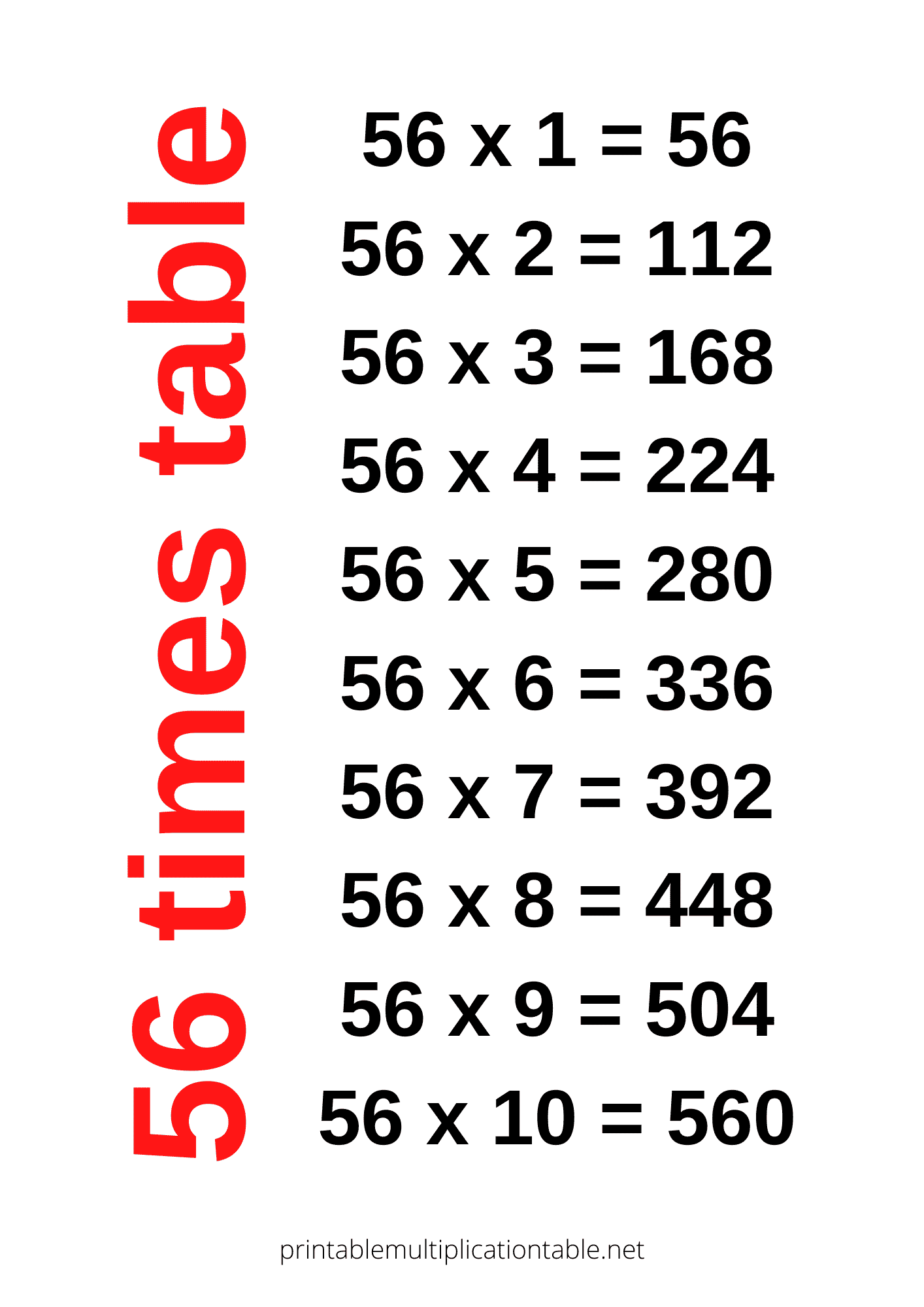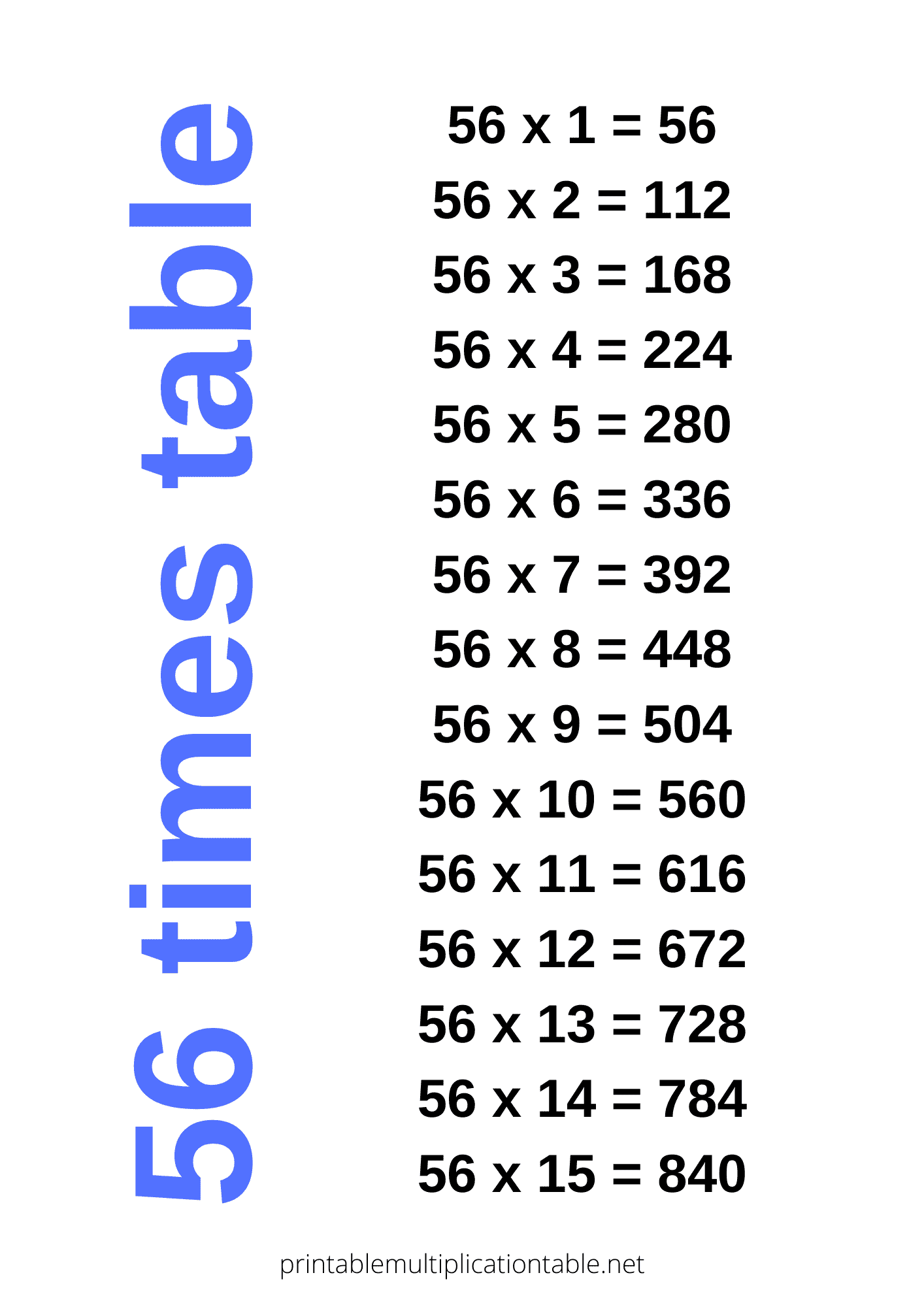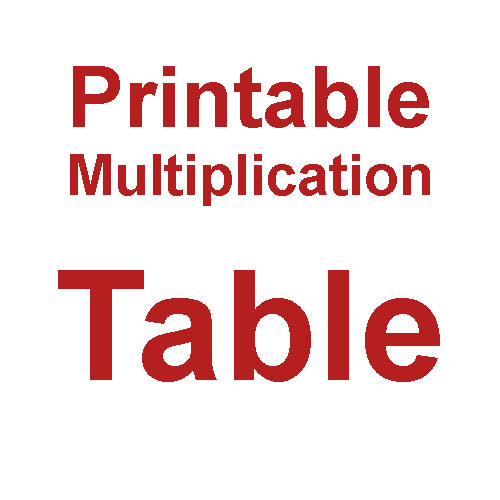56 Times Table
As a math teacher, you have the incredible opportunity to ignite a passion for numbers and guide students on a journey of mathematical discovery. While multiplication tables up to 10 or 12 are commonly taught, exploring higher multiplication tables can be an exciting and enriching experience.
In this blog, we embark on an exploration of the captivating 56 times table, unraveling its patterns, making connections, and sharing effective teaching strategies to help your students master this mathematical realm.
Understanding the Structure of the 56 Times Table
The 56 times table consists of the multiples of 56 from 1 to infinity. Let's begin by examining the initial multiples to gain insights into the patterns that emerge:
- 1 x 56 = 56
- 2 x 56 = 112
- 3 x 56 = 168
- 4 x 56 = 224
- 5 x 56 = 280
Observations and Patterns
Last Digits
One intriguing pattern in the 56 times table is the repeating sequence of the last two digits in each multiple.
For example, the last two digits of the first multiple, 56, are 56. Similarly, the last two digits of the sixth multiple, 336, are also 56.
This pattern repeats consistently throughout the entire table.
Digit Sum
Another fascinating aspect lies in the digit sum, which is the sum of the individual digits of a number. In the 56 times table, the digit sum of each multiple increases by 7 with each subsequent multiple:
- Digit sum of 56: 5 + 6 = 11 (1 + 1 = 2)
- Digit sum of 112: 1 + 1 + 2 = 4
- Digit sum of 168: 1 + 6 + 8 = 15 (1 + 5 = 6)
This pattern of incrementing digit sums by 7 continues indefinitely within the table.
Relationship with Other Tables
The 56 times table reveals intriguing connections with other multiplication tables.
For instance, any multiple of 56 divided by 8 results in a multiple of 7. This relationship between the 56 times table and the 8 times table adds depth and interplay to the exploration of multiplication.
Teaching Strategies
Pattern Recognition
Encourage your students to actively observe and recognize the patterns within the 56 times table.
Have them identify and analyze the repeating last two digits and the incrementing digit sums.
Engage them in discussions about the significance and consistency of these patterns.
Mental Math Exercises
Incorporate mental math exercises using the 56 times table. Challenge your students to quickly calculate the product of 56 and a single-digit number or to estimate the value of larger multiples of 56.
This promotes mental calculation skills and enhances fluency with the table.
Exploring Relationships
Explore the connection between the 56 times table and other multiplication tables, such as the 8 times table (7 x 8 = 56).
Discuss with your students how recognizing these relationships can simplify calculations and deepen their understanding of number patterns.
Real-World Applications
Help students see the relevance of the 56 times table by presenting real-life scenarios.
For example, discuss situations where scaling by 56 is applicable, such as calculating the total cost of purchasing multiple items priced at $56 each or determining the distance traveled at a speed of 56 miles per hour.
Fifty-six Multiplication Table
Read, Repeat and Learn fifty six times table and Check yourself by giving a test below

Also check times table 51 times table 52 times table 53 times table 54 times table 55 times table 56 times table 57 times table 58 times table 59 times table 60 times table
56 Times Table Chart

Table of 56

56 Times table Test
Multiplication of 56
Reverse Multiplication of 56
Shuffled Multiplication of 56
How much is 56 multiplied by other numbers?
